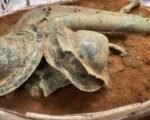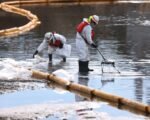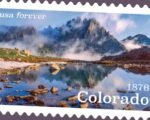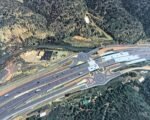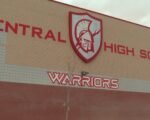In a remarkable archaeological find, five musket balls from the early battles of the American Revolutionary War have been unearthed in Concord, Massachusetts. These musket balls, believed to have been fired during the famous “Shot Heard Round the World” on April 19, 1775, provide a tangible connection to the pivotal moments that sparked the United States’ fight for independence. The discovery has generated significant excitement among historians and the public alike, shedding new light on this historic event.
Unearthing History
The musket balls were discovered by archaeologists working at Minute Man National Historical Park. This site, located near the North Bridge in Concord, is historically significant as the location where American militiamen and British soldiers first exchanged fire. The discovery of these musket balls adds a new layer of understanding to the events of that day.

Each musket ball was carefully analyzed, revealing distinct markings that indicate they were fired from smooth-bore muskets. These markings, known as bands, are formed when a musket ball is discharged, providing evidence that these were not simply dropped but actively used in battle. The varying sizes of the musket balls suggest they were made by colonial militiamen, further supporting their historical significance.
The excitement surrounding the discovery is palpable. Park rangers and historians have expressed their amazement at finding such well-preserved artifacts. The musket balls offer a direct link to the past, allowing us to better understand the experiences of those who fought in the early days of the American Revolution.
Significance of the Find
The discovery of these musket balls is significant for several reasons. Firstly, it provides concrete evidence of the battle that took place at the North Bridge, a key moment in the Revolutionary War. This battle marked the first time colonial militia fired upon British soldiers, an act that escalated the conflict and set the stage for the war for independence.
Secondly, the musket balls offer insights into the weaponry and tactics used by the colonial militia. The presence of different sizes and markings suggests a level of resourcefulness and adaptability among the militiamen. This find helps historians piece together the realities of 18th-century warfare and the challenges faced by those who fought.
Moreover, the discovery has educational value. It allows visitors to Minute Man National Historical Park to connect with history in a tangible way. Seeing these artifacts firsthand can inspire a deeper appreciation for the sacrifices made by those who fought for American independence. The musket balls serve as a powerful reminder of the bravery and determination of the early American patriots.
Preserving and Sharing the Past
The National Park Service is committed to preserving these musket balls and sharing their story with the public. The artifacts will be displayed at the North Bridge Visitor Center, where visitors can learn about their significance and the broader context of the Revolutionary War. Interpretive programs and guided tours will provide additional opportunities for education and engagement.
Efforts to preserve the musket balls involve careful conservation techniques. Specialists will ensure that the artifacts are protected from deterioration, allowing future generations to study and appreciate them. The National Park Service also plans to conduct further archaeological investigations in the area, hoping to uncover more artifacts and deepen our understanding of this historic site.
Public interest in the discovery has been high, with many eager to learn more about the early days of the American Revolution. The musket balls have captured the imagination of people across the country, highlighting the enduring fascination with this pivotal period in history. By preserving and sharing these artifacts, the National Park Service is helping to keep the story of the American Revolution alive.

